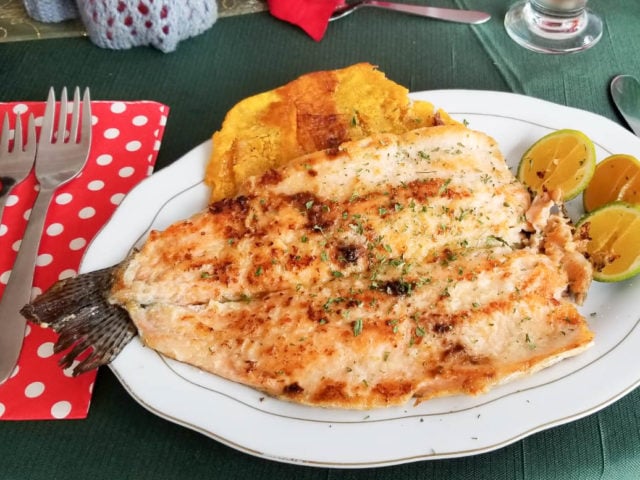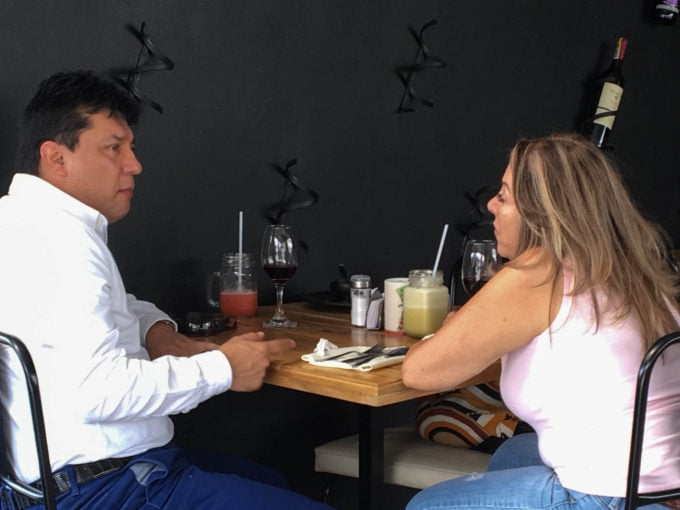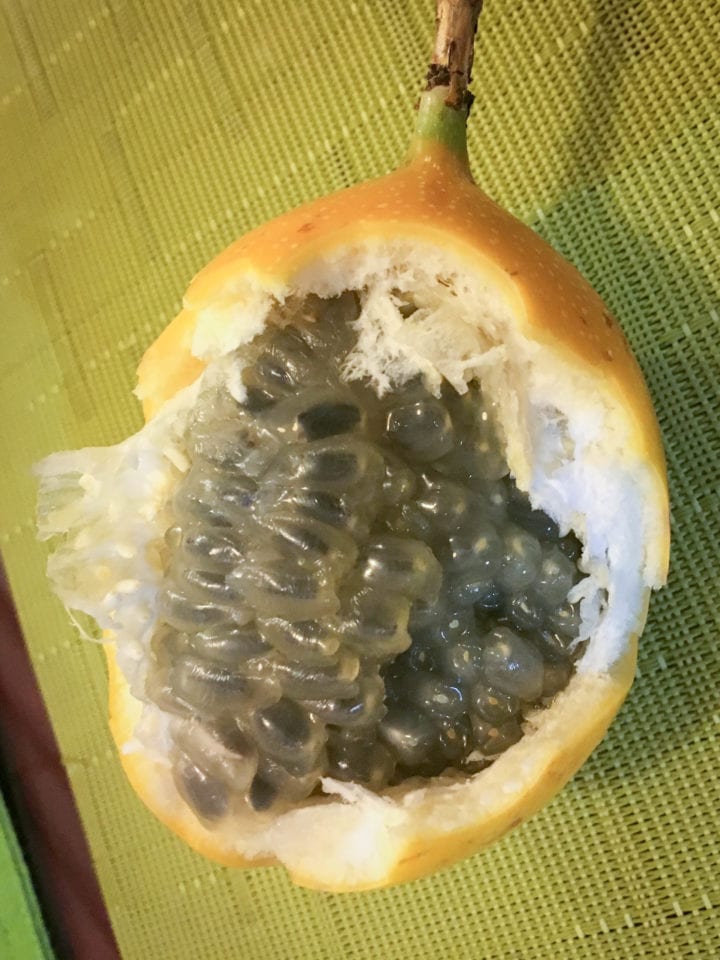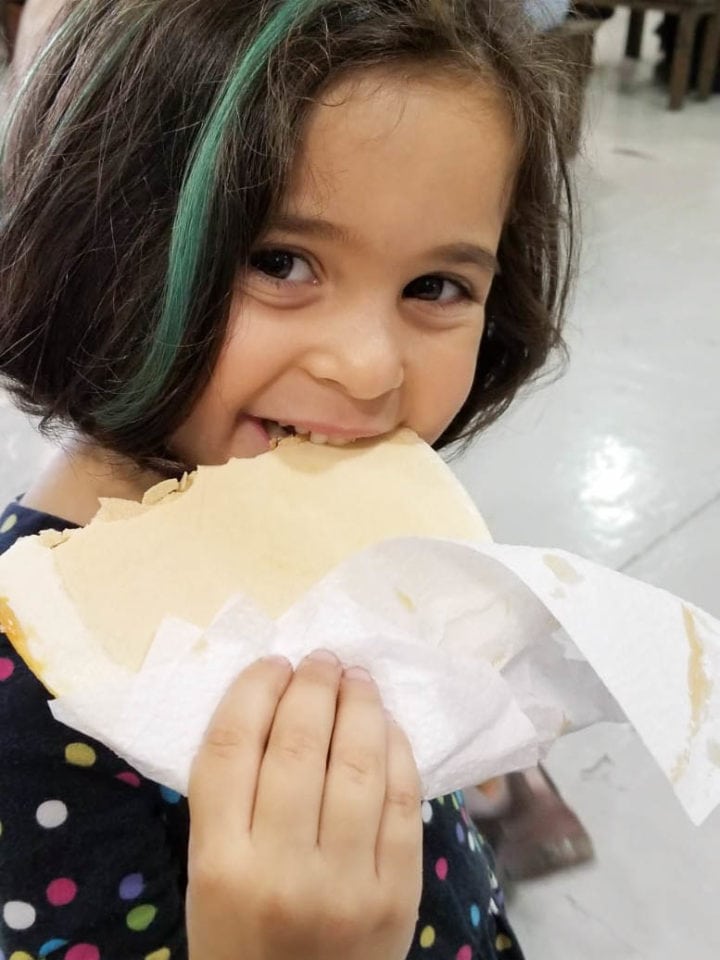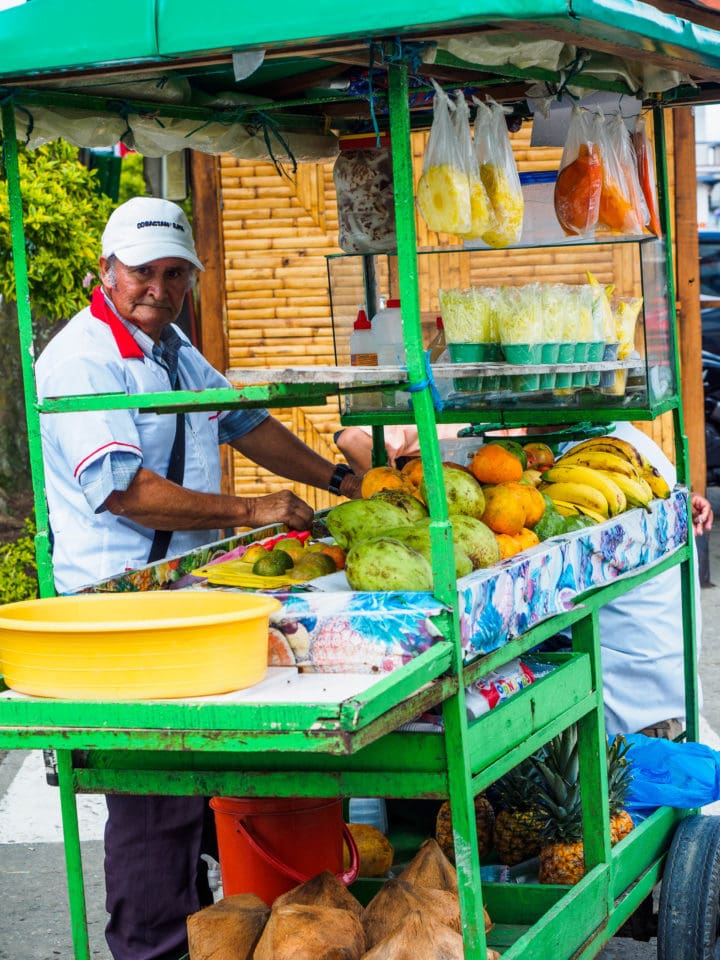Our final post about Colombia focuses on one of our favorite parts of travel: food. In that sphere, Colombia was both a hit and a miss.
Most of the Colombian food that we encountered was fairly mild, lacking in seasoning, and heavy on starches. Grilled or roasted meat was typically served dry, without sauces, and accompanied by plain white rice, boiled or fried potatoes, or fried plantains—sometimes all three. On the Caribbean coast, rice is cooked with toasted coconut, which makes it much tastier. And in some places, deep-fried plantains are filled with cheese and guava paste (an acquired taste).
An exception to the sauceless-meat trend is trucha (rainbow trout), a popular delicacy. In areas near trout streams or trout farms, it’s not uncommon to find restaurants that offer trout served 20 different ways (and not much else). The fish is more reddish than trout at home and is generally very good.
Every meal in Colombia comes with at least one arepa—a flat, cardboard-like fried cake made from a type of cornmeal that manages to have much less corn flavor or salt than the masa used to make tortillas in Mexico or Central America. Occasionally, we found big puffy arepas, which we liked better, except that they were almost always slathered with margarine (an abomination).
On one of our last nights in Colombia, we tried an arepa de chocolo, which has nothing to do with chocolate but instead is made from sweet corn and filled with cheese. It was great, and we wished we had discovered it earlier.
Other traditional foods include thick chicken, potato, and corn soups and tamale-like dishes of rice, cornmeal, or cassava meal mixed with meat and root vegetables and steamed in banana leaves to keep them moist. They’re all hearty and filling—traditional lunches for hard-working people. If only they included some seasoning.
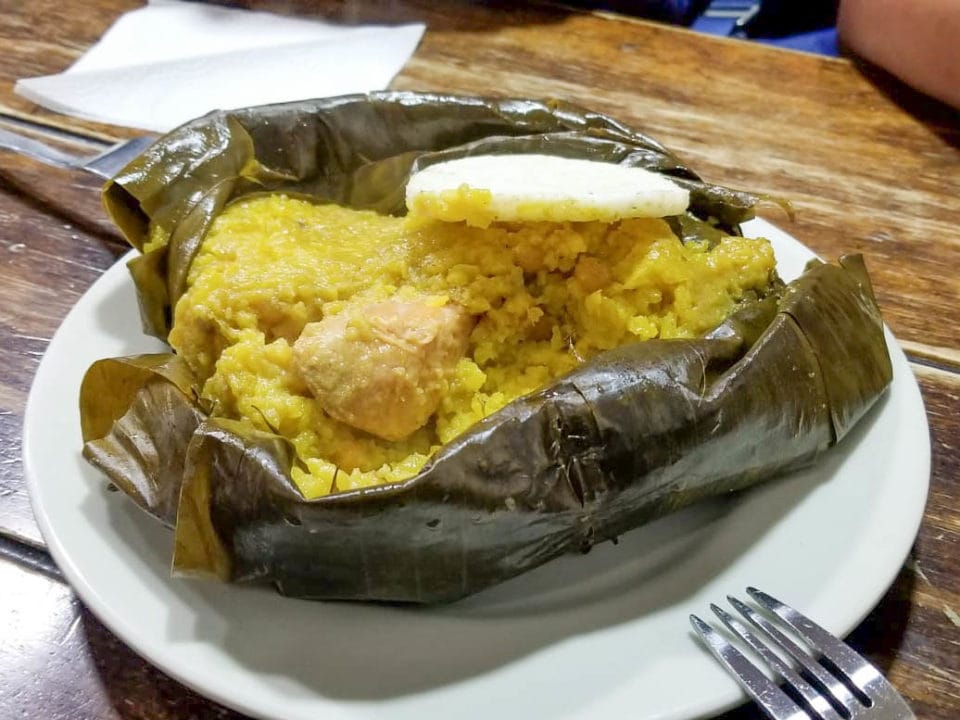
Fruit is wonderful in Colombia. There are so many varieties available at one time, many of which are turned into fresh juices—lime, orange, papaya, pineapple, watermelon, guanabana (a big spiky green fruit with a mild white flesh), lulo (a small citrusy fruit that Melissa loved), and maracuya (my favorite, passion fruit).
Juice isn’t just a breakfast drink. Corner fruit stands serve fresh juices all through the day, mixed with either water or milk. And it’s common to see Colombians having a glass of juice with their lunch or dinner—even in upscale restaurants where they’re also drinking wine.
Our hosts in Jardin introduced us to a new fruit: granadilla, a yellow-orange egg-shaped fruit with a thing hard shell. Inside, it’s filled with a slippery mixture of pulp and seeds that you suck right out of the fruit and swallow, preferably without chewing. It has a mixed sweet and sour flavor that Melissa is very fond of.
And speaking of fruit, fresh avocado is everywhere. In a typical lunch or dinner, it may be the only green thing on the plate.
Hamburgers seem to be very trendy right now in Colombia, with hamburger stands popping up all over the place, and French fries are a mainstay in even upscale restaurants. Despite that, the most common U.S. fast-food chains we saw in Colombia were Subway and Dunkin Donuts rather than hamburger places like McDonald’s.
Colombia is a dairy country, but I found the cheese rubbery and lacking in any strong flavor. (I think it suffered by comparison to the diverse and glorious cheeses of Switzerland that we ate so much of last summer). That lack of flavor may be one reason that Colombians often dip chunks of cheese in hot chocolate or in sugar cane juice dissolved in hot water. Yogurt is widely available, but it’s very thin (the texture for drinking or pouring on cereal) and very, very sweet.
In fact, super sweetness seems to be a hallmark of many Colombian foods and drinks: sodas, juices, baked goods, yogurt, even breakfast cereal. (The Colombian versions of Special K and Cheerios are sugar-coated, unlike the U.S. versions.)
The ultimate Colombian sweet is arequipe, a thick dulce de leche (caramel) paste. The idea seems to be that every baked good, including donuts, is better oozing with arequipe. Sidewalk stands sell obleas, pairs of large round wafers with arequipe (and sometimes chocolate or blackberry jam) inside, for a Colombian version of a Dutch stroopwafel. They taste a bit like styrofoam on the outside, but they’re delicious in the middle.
Colombia is also full of bakeries featuring various puffy bread rolls made from wheat or cassava flour that local people adore, but that we couldn’t get excited about. Melissa’s and my taste in breads and other baked goods tends firmly toward the northern European (French pastries and dense German bread), so we just weren’t in the right country for bread products. But the fresh fruit on every corner and fruit juices at every meal more than made up for that.
